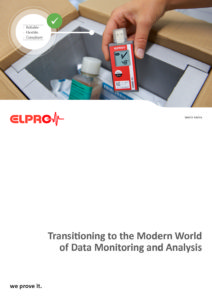In the world of pharmaceutical supply chains, where cost reduction is king and a growing number of products are temperature-controlled – collecting, communicating and analyzing temperature and logistics data is critical to success. If data is the foundation of business intelligence, why are Pharma companies still using old practices for data analysis – reviewing data by hand, doing manual entries and archaic reporting methods? All of these outdated practices and long processes create human error and surging hidden costs. Today, all of the important temperature data and automation tools are at the industry’s fingertips, so why not use them?
At some multi-national pharmaceutical companies with tens or hundreds of receiving sites, it’s difficult to know what happens with temperature-controlled products at the destination. Lack of visibility of shipment performance and how products were being handled can create many challenges, often involving lengthy and tiring processes to get data back from receiving sites to have a complete picture of product temperature conditions. Often companies are at the mercy of their global supply chain having numerous receiving sites; CMOs using different temperature monitors; and different reports created in different systems – nothing cohesive. A shipment is sent with a data logger to record temperature and ensure product quality. But what if the product owner doesn’t receive feedback or data back from the receiving site? If there was a temperature excursion, how quickly is it communicated and how manual of a process is it to connect the corresponding transport and product information with the particular shipment?
Discover how you can transition to the modern world of data monitoring and analysis with Elpro.

%20(1).png?width=773&height=112&name=Generis%20Logo%20full%20Colour%20(Large)%20(1).png)


-Nov-13-2025-01-18-02-9699-PM.png)
-2.png)